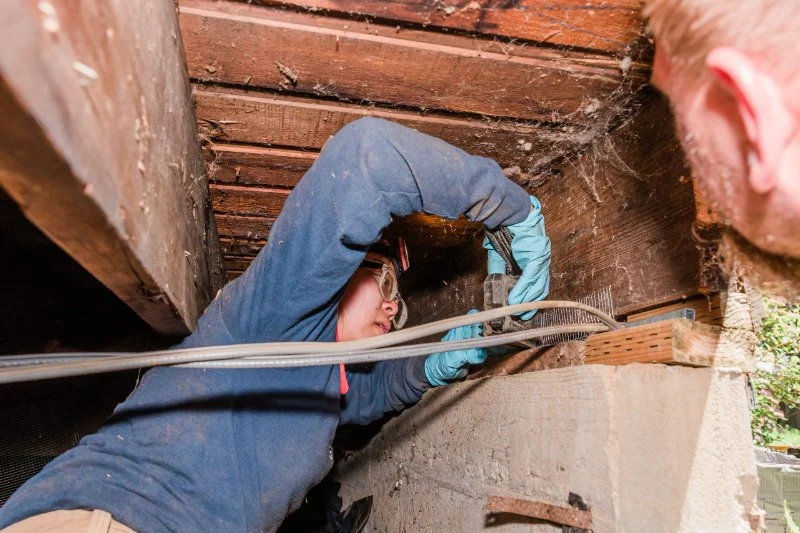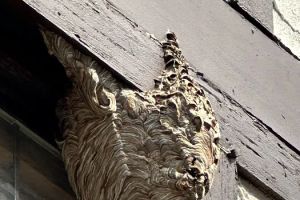
- Understanding-Smoke-Tests-for-Pest-Control
- Why-Smoke-Tests-Are-Effective
- How-to-Conduct-a-Smoke-Test
- Common-Pest-Entry-Points-Revealed-by-Smoke-Tests
- Real-World-Examples-of-Smoke-Tests-in-Action
- Preventing-Pests-with-Smoke-Test-Results
- Professional-Help-and-Recommended-Products
1. Understanding Smoke Tests for Pest Control
A smoke test is a simple yet powerful tool used in pest control to identify the entry points of pests, especially rodents, into a building. By introducing smoke into a sealed area, technicians can trace the flow of air and smoke to pinpoint hidden gaps, cracks, and holes where pests might be sneaking in. This method is particularly effective because it allows for real-time visualization of otherwise undetected entry points, providing a more accurate diagnosis of pest access routes.
Although often associated with detecting leaks in plumbing or air systems, smoke tests have become a valuable technique in the pest control industry, especially for homes or businesses with persistent rodent or insect issues. This simple method is cost-effective, safe, and non-invasive, making it a popular choice for property owners looking to address pest entry problems on a budget.

Pest2Kill Exterminating Co Inc
White PlainsWestchester CountyNew York
170 Grand St, White Plains, NY 10601, USA
2. Why Smoke Tests Are Effective
2.1. Visualization of Hidden Entry Points
Many pests, such as rats, mice, and termites, enter homes through cracks or hidden crevices that are not visible during a standard inspection. Smoke tests reveal these often overlooked entry points by following the smoke’s path, which moves through even the smallest gaps in walls, foundations, and roofs.
2.2. Non-Invasive and Safe
Unlike other pest control methods that may involve traps, chemicals, or drilling, smoke tests are non-invasive. There’s no need to tear down walls or perform major alterations to identify where pests are entering. The smoke used is safe and non-toxic, making it an eco-friendly and straightforward solution to pest detection.
2.3. Cost-Effective Solution
For homeowners on a budget, smoke tests offer an affordable way to identify pest entry points without the need for expensive inspections or treatments. Once entry points are located, simple repairs, such as sealing gaps with caulk or weather stripping, can prevent further infestations at a fraction of the cost of traditional pest control services.
3. How to Conduct a Smoke Test
3.1. Preparation
Before conducting a smoke test, it’s important to ensure that the area is properly sealed. All windows, doors, and vents should be closed tightly to create an enclosed environment. The smoke source, usually a smoke bomb or a specialized smoke machine, should be placed in an area where airflow can help direct the smoke through potential entry points, such as along baseboards, around pipes, or near the foundation.
3.2. Introduce Smoke and Observe
Once the smoke source is activated, observe where the smoke escapes. Watch for any areas where the smoke leaks out, as these are likely the areas where pests are entering. Pay special attention to corners, joints, and areas near plumbing fixtures, as these are common pest entry spots.
3.3. Seal Entry Points
After identifying the entry points, seal them with appropriate materials. Use caulking or expanding foam to fill small gaps, and reinforce door and window seals with weatherstripping. If larger cracks or holes are found, consider using mesh or other durable materials for long-term protection.
4. Common Pest Entry Points Revealed by Smoke Tests
4.1. Cracks and Gaps in Foundation
One of the most common entry points for pests like termites, rodents, and ants is the foundation. Small cracks or gaps in concrete or brick foundations can provide a pathway for pests to enter your home. Smoke tests can reveal these hidden cracks, allowing homeowners to seal them before pests cause significant damage.
4.2. Gaps Around Plumbing and Utility Lines
Pests often use gaps around plumbing pipes, electrical wires, and HVAC systems to enter homes. These gaps are typically hidden behind walls or beneath sinks, making them difficult to detect. A smoke test can help identify these entry points by showing where the smoke moves around pipes or wiring, highlighting areas that need to be sealed.
4.3. Attic and Roofline Gaps
The roof and attic are also common entry points for pests, particularly rodents and insects. Smoke tests can reveal small gaps or poorly sealed areas around vents, chimneys, and roof joints, which can be hotspots for pest invasions. Sealing these areas can prevent pests from making your attic their new home.
5. Real-World Examples of Smoke Tests in Action
In a suburban home in California, a family had been experiencing an ongoing mouse infestation. After a failed attempt at traditional traps and baits, they decided to conduct a smoke test. The smoke revealed several small cracks around the foundation that were previously unnoticed. Once sealed, the mouse activity significantly decreased, and the home remained pest-free after the repairs.
Another case in Florida involved a termite infestation in the attic of a beach house. The homeowners noticed signs of wood damage but couldn’t identify the entry points. After using a smoke test, the team discovered cracks around the roofline and under a poorly sealed attic vent. After sealing the gaps and applying a targeted termite treatment, the infestation was eliminated.
6. Preventing Pests with Smoke Test Results
Once you’ve used a smoke test to identify entry points, it’s essential to take preventive measures to avoid future infestations. Regularly inspect and maintain your home’s seals and foundation, especially after storms or extreme weather events. Keep an eye on areas that are prone to wear, such as door frames, windows, and plumbing access points.
Additionally, consider installing pest barriers around the perimeter of your home and use pest deterrents, such as essential oils or natural repellents, to complement your sealing efforts. Routine smoke tests can also be performed annually to ensure that no new entry points have emerged over time.
7. Professional Help and Recommended Products
While smoke tests are effective for DIY pest control, homeowners may also choose to consult with professionals for a more thorough inspection and treatment. Pest control experts can provide advanced techniques, such as thermal imaging or moisture monitoring, to supplement smoke testing and ensure comprehensive protection.
For those interested in DIY solutions, PestControlHub offers a wide range of pest control products, including smoke test kits, sealing materials, and pest deterrents. Their expert reviews and recommendations make it easier to find the right products for your home’s specific needs.








 Wildlife Resolutions4.0 (443 reviews)
Wildlife Resolutions4.0 (443 reviews) Pest Marshals of Toledo5.0 (2 reviews)
Pest Marshals of Toledo5.0 (2 reviews) LS Rodent Proofing & Pest Control Service5.0 (4 reviews)
LS Rodent Proofing & Pest Control Service5.0 (4 reviews) Best Termite & Pest Control4.0 (16 reviews)
Best Termite & Pest Control4.0 (16 reviews) Varment Guard Wildlife Services5.0 (28 reviews)
Varment Guard Wildlife Services5.0 (28 reviews) Pestban Inc4.0 (394 reviews)
Pestban Inc4.0 (394 reviews) How to Use Monitors to Detect Pest Entry: A Comprehensive Guide
How to Use Monitors to Detect Pest Entry: A Comprehensive Guide How to Predict Which Pests Will Invade Next – Smart Pest Forecasting for the U.S.
How to Predict Which Pests Will Invade Next – Smart Pest Forecasting for the U.S. How to Conduct a Pest Risk Assessment at Home – Expert Guide
How to Conduct a Pest Risk Assessment at Home – Expert Guide How to Block Pest Entry Around Deck Joists: Effective Solutions
How to Block Pest Entry Around Deck Joists: Effective Solutions How to Safely Use Fumigation Methods: A Comprehensive Guide for Homeowners
How to Safely Use Fumigation Methods: A Comprehensive Guide for Homeowners Why Pests Are More Active After Rain: Understanding the Link Between Weather and Pest Behavior
Why Pests Are More Active After Rain: Understanding the Link Between Weather and Pest Behavior